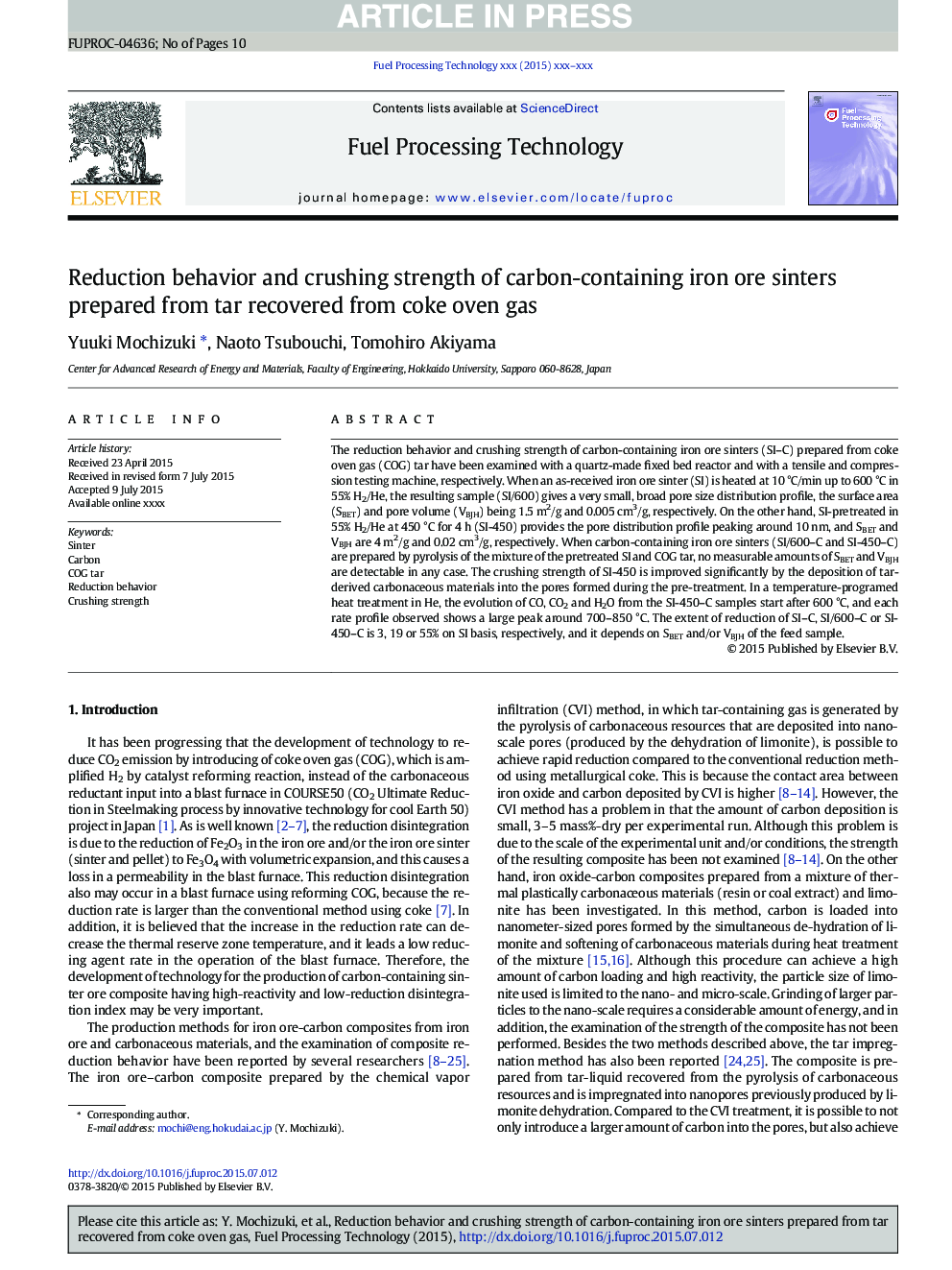| Article ID | Journal | Published Year | Pages | File Type |
|---|---|---|---|---|
| 6656961 | Fuel Processing Technology | 2015 | 10 Pages |
Abstract
The reduction behavior and crushing strength of carbon-containing iron ore sinters (SI-C) prepared from coke oven gas (COG) tar have been examined with a quartz-made fixed bed reactor and with a tensile and compression testing machine, respectively. When an as-received iron ore sinter (SI) is heated at 10 °C/min up to 600 °C in 55% H2/He, the resulting sample (SI/600) gives a very small, broad pore size distribution profile, the surface area (SBET) and pore volume (VBJH) being 1.5 m2/g and 0.005 cm3/g, respectively. On the other hand, SI-pretreated in 55% H2/He at 450 °C for 4 h (SI-450) provides the pore distribution profile peaking around 10 nm, and SBET and VBJH are 4 m2/g and 0.02 cm3/g, respectively. When carbon-containing iron ore sinters (SI/600-C and SI-450-C) are prepared by pyrolysis of the mixture of the pretreated SI and COG tar, no measurable amounts of SBET and VBJH are detectable in any case. The crushing strength of SI-450 is improved significantly by the deposition of tar-derived carbonaceous materials into the pores formed during the pre-treatment. In a temperature-programed heat treatment in He, the evolution of CO, CO2 and H2O from the SI-450-C samples start after 600 °C, and each rate profile observed shows a large peak around 700-850 °C. The extent of reduction of SI-C, SI/600-C or SI-450-C is 3, 19 or 55% on SI basis, respectively, and it depends on SBET and/or VBJH of the feed sample.
Related Topics
Physical Sciences and Engineering
Chemical Engineering
Chemical Engineering (General)
Authors
Yuuki Mochizuki, Naoto Tsubouchi, Tomohiro Akiyama,
